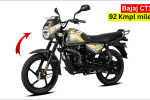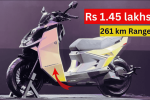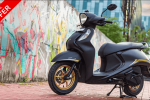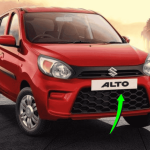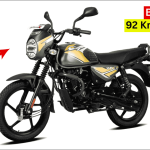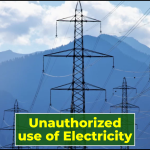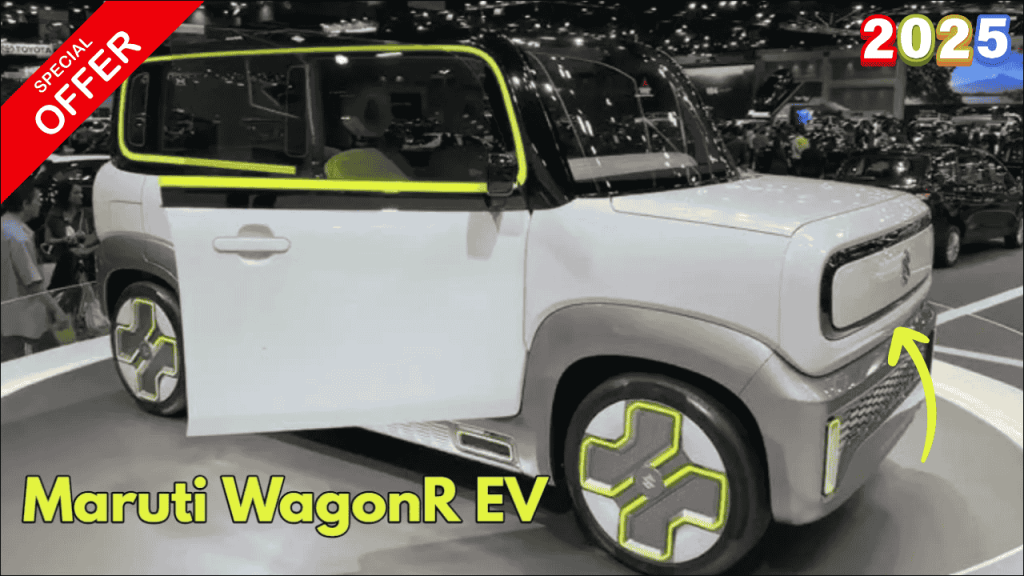
India’s electric vehicle market is set to welcome a significant addition with the upcoming launch of the Maruti Wagon R EV. Building on the tremendous popularity of its ICE (Internal Combustion Engine) counterpart, which regularly sells 15,000-20,000 units monthly, Maruti Suzuki is bringing an all-electric version to challenge competitors in the affordable EV segment. With its boxy, practical design and impressive projected range, the Wagon R EV promises to be a game-changer for environmentally conscious urban commuters.
Launch Timeline and Positioning
Maruti Suzuki has confirmed that the Wagon R EV will be part of its ambitious plan to launch six electric vehicles in India by 2030. While not the company’s first EV offering (that distinction will go to the eVX SUV scheduled for early 2025), the Wagon R EV is expected to be the company’s first mass-market electric vehicle aimed at the affordable segment.
| Launch Timeline Details | Information |
|---|---|
| Expected Launch Date | January 2026 |
| Market Position | Mass-market affordable EV |
| Target Competition | Tata Tiago EV, MG Comet EV, Tata Punch EV |
| Production Strategy | Locally manufactured in India |
| Place in EV Lineup | Second EV after eVX SUV |
The Wagon R EV has been spotted during testing multiple times over the past few years, signaling Maruti’s serious intent to enter the electric mobility space with a vehicle that maintains the practical DNA of the original Wagon R while offering zero-emission transportation.
Expected Price and Variants
Pricing will be crucial for the success of the Wagon R EV in the price-sensitive Indian market. Industry experts anticipate that Maruti will position it competitively to capture a significant market share.
| Price and Variants | Details |
|---|---|
| Expected Starting Price | ₹8.50-10.00 Lakh (ex-showroom) |
| Estimated Variant Structure | 3 variants (base, mid, top) |
| Expected Price Range | ₹8.50-12.00 Lakh (depending on battery size) |
| Booking Amount (Estimated) | ₹11,000-21,000 |
| Target Price Positioning | 10-15% premium over ICE Wagon R |
The pricing strategy suggests that Maruti aims to make the Wagon R EV accessible to a broader audience while managing the inevitable premium that comes with electric powertrains. By potentially offering multiple battery pack options, Maruti could create a more diverse price range to cater to different customer needs.
Powertrain and Battery Specifications
The Wagon R EV is expected to offer impressive performance for its segment, with a focus on urban usability and practical range for daily commutes.
| Powertrain Specifications | Details |
|---|---|
| Electric Motor Power | 40-60 bhp (estimated) |
| Expected Torque | 130-150 Nm (estimated) |
| Battery Capacity Options | Multiple options expected (30-40 kWh) |
| Projected Range | 300+ kilometers on a single charge |
| Charging Capability | Fast charging support (0-80% in approximately 1 hour) |
| Drivetrain Configuration | Front-wheel drive |
| Regenerative Braking | Multiple levels expected |
The Wagon R EV will likely feature regenerative braking technology to maximize range, especially in stop-and-go city traffic conditions. This system recovers energy normally lost during braking and feeds it back into the battery, extending the vehicle’s range.
Design and Exterior
While maintaining the iconic tall-boy silhouette that has made the Wagon R instantly recognizable, the EV version is expected to feature distinctive styling elements to differentiate it from its ICE counterpart.
| Design Elements | Details |
|---|---|
| Overall Design Philosophy | Modern interpretation of the tall-boy design |
| Front Fascia | Closed-off grille with distinctive LED lighting |
| EV-Specific Elements | Aerodynamic wheels, blue accents, EV badging |
| Dimensions (Expected) | Similar to current Wagon R (L: 3,655mm, W: 1,620mm, H: 1,675mm) |
| Ground Clearance | Likely adjusted to accommodate battery placement |
| Color Options | 6-8 options including EV-exclusive colors |
The design is expected to prioritize both functionality and aerodynamic efficiency, with subtle modifications to improve the car’s range through reduced drag coefficient.
Interior and Features
The interior of the Wagon R EV is expected to retain the spaciousness of the standard model while incorporating EV-specific elements and potentially more premium materials.
| Interior Features | Details |
|---|---|
| Seating Capacity | 5 persons |
| Dashboard Design | Digital-centric with EV-specific displays |
| Infotainment System | 7-9 inch touchscreen with smartphone connectivity |
| Digital Instrument Cluster | EV-specific information display (range, power consumption) |
| Boot Space | Expected to be around 340 liters (potentially reduced from ICE version) |
| Seat Configuration | 60:40 split rear seats likely to be retained |
| Premium Features (Top Variant) | Automatic climate control, connected car tech, keyless entry |
| EV-Specific Features | Drive modes, regenerative braking control, range optimization settings |
The interior is expected to feature recycled and eco-friendly materials in line with the vehicle’s environmental positioning, potentially including recycled fabrics and sustainably sourced trim elements.
Battery Technology and Charging
Maruti Suzuki is expected to equip the Wagon R EV with contemporary battery technology that balances cost, range, and longevity.
| Battery and Charging | Details |
|---|---|
| Battery Type | Lithium-ion with thermal management |
| Expected Warranty | 8 years/1,60,000 km on battery pack |
| Standard Charger | 3.3 kW AC charger (0-100% in 8-10 hours) |
| Fast Charging Capability | DC fast charging (10-80% in approximately 60 minutes) |
| Charging Port Location | Front or side placement expected |
| Battery Protection | Underfloor protection, IP67 water/dust resistance |
| Vehicle-to-Load (V2L) | Potential inclusion in top variants |
The inclusion of effective thermal management systems will be crucial for battery longevity in India’s varied climate conditions, especially in regions that experience extreme temperatures.
Technology and Connected Features
Maruti is likely to use the Wagon R EV to showcase its latest technology offerings, potentially including:
| Technology Features | Details |
|---|---|
| Connected Car Platform | Suzuki Connect with EV-specific functions |
| Smartphone App Integration | Remote monitoring, charging status, pre-conditioning |
| Navigation System | EV-optimized with charging station mapping |
| Voice Assistant | Natural language understanding for vehicle controls |
| OTA Updates | Software updates for vehicle systems and features |
| Audio System | 4-6 speaker setup with smartphone connectivity |
| Digital Services | Subscription-based premium connected features |
The connected car features are expected to be particularly focused on EV-specific functionality, such as charging station location, battery health monitoring, and range optimization suggestions.
Safety Features
Safety will be a key focus area for the Wagon R EV, especially considering the evolving regulatory landscape in India.
| Safety Features | Details |
|---|---|
| Airbags | 6 airbags (expected even in base variant) |
| Structural Integrity | Enhanced to protect battery and passengers |
| Electronic Stability Control | Standard across variants |
| Hill Start Assist | Likely standard feature |
| ADAS Features | Potential inclusion in top variant (basic features) |
| Battery Safety | Dedicated cooling system, isolation in case of collision |
| Regenerative Braking | Multi-level with smart blending with friction brakes |
| Child Safety | ISOFIX mounts, child locks |
The Wagon R EV will need to address safety concerns specific to electric vehicles, including battery protection during accidents and pedestrian alert systems to compensate for the quieter operation.
Market Positioning and Competition
The Wagon R EV will enter a rapidly growing but still nascent affordable EV market in India, facing established competitors.
| Market Factors | Details |
|---|---|
| Primary Competitors | Tata Tiago EV, MG Comet EV, Tata Punch EV |
| Unique Selling Points | Maruti’s service network, potential range advantage |
| Target Customer Base | Urban commuters, first-time EV buyers, existing Maruti customers |
| Projected Monthly Sales | 3,000-5,000 units (industry estimates) |
| Export Markets | Potential exports to similar emerging markets |
| Dealership Network | Available through Maruti’s premium NEXA channel |
Maruti’s extensive service network could be a significant advantage over competitors, addressing one of the key concerns for potential EV buyers in India.
Environmental Impact and Sustainability
The Wagon R EV is expected to be positioned as part of Maruti’s broader sustainability initiative:
| Sustainability Aspects | Details |
|---|---|
| Carbon Footprint Reduction | Estimated 30-40% lower lifecycle emissions than ICE version |
| Manufacturing Process | Use of renewable energy in production facilities |
| Material Selection | Increased use of recycled and sustainable materials |
| End-of-Life Management | Battery recycling program likely to be introduced |
| Energy Consumption | Targeting efficiency of 5-6 km per kWh |
The company is expected to highlight the vehicle’s contribution to reduced air pollution in urban centers as part of its marketing campaign.
Ownership Experience and Cost Analysis
The total cost of ownership will be a key selling point for the Wagon R EV:
| Ownership Aspect | Details |
|---|---|
| Estimated Running Cost | ₹1-1.5 per kilometer (vs. ₹5-7 for petrol) |
| Maintenance Cost | 30-40% lower than comparable ICE vehicles |
| Insurance Premium | Expected to be 15-20% higher than ICE Wagon R |
| Battery Replacement Cost | Likely to be subsidized through exchange programs |
| Residual Value | Expected to maintain 50-55% value after 5 years |
| Service Interval | Annual or 20,000 km (whichever earlier) |
The significantly lower running costs could offset the higher initial purchase price for customers who drive regularly, particularly in urban environments with rising fuel costs.
Conclusion
The Maruti Wagon R EV represents a significant step in the democratization of electric mobility in India. By electrifying one of its most popular and practical models, Maruti Suzuki is signaling its commitment to an electric future while leveraging its vast sales and service network to address key concerns of potential EV buyers.
With its impressive projected range, practical design, and the backing of India’s largest carmaker, the Wagon R EV has the potential to accelerate EV adoption in the mass market segment. As launch preparations continue, potential customers and industry observers will be watching closely to see if Maruti’s first mass-market EV can deliver on its promise of making electric mobility both practical and affordable for the average Indian consumer.
FAQs
When will the Maruti Wagon R EV be launched in India? The Maruti Wagon R EV is expected to launch in January 2026.
What will be the driving range of the Wagon R EV? The projected driving range is expected to be more than 300 kilometers on a single charge.
Will the Wagon R EV support fast charging? Yes, the Wagon R EV is expected to support fast charging, allowing 0-80% charging in approximately one hour.
How will the Wagon R EV be priced compared to its petrol version? The Wagon R EV is expected to be priced at a premium of approximately ₹3-4 lakh over the equivalent petrol variant.

